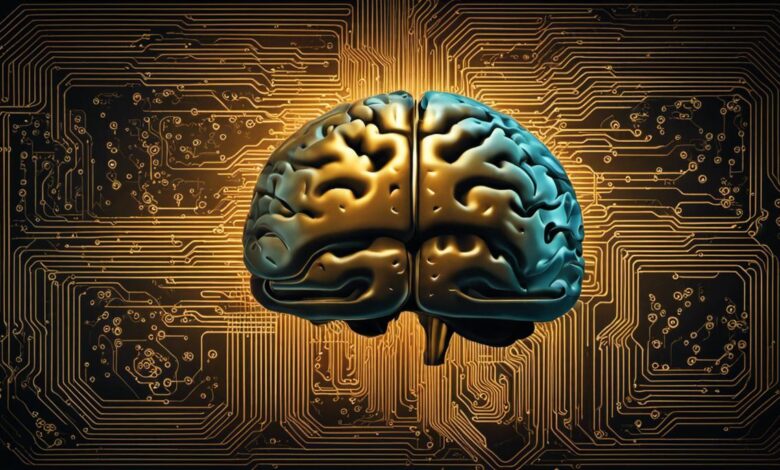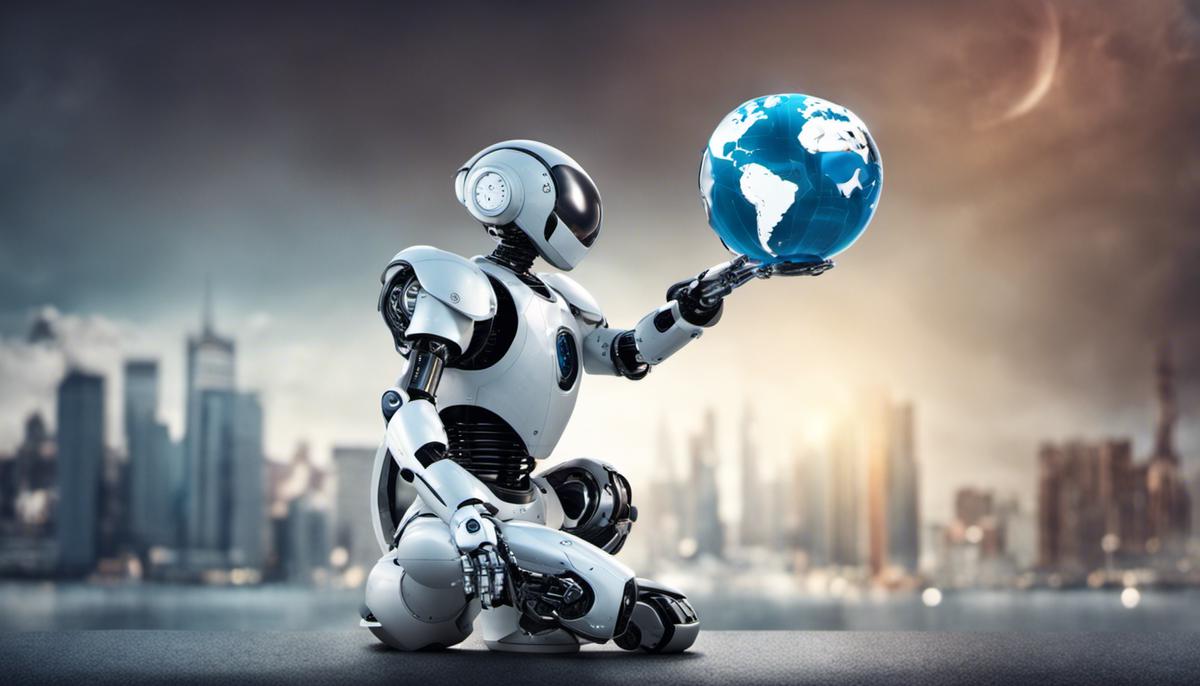Understanding the World of Artificial Intelligence Advancements

We find ourselves at the precipice of a paradigm shift, ushered in by a world energized by artificial intelligence (AI). This groundbreaking technology has its deep-seated roots in rich scientific history, dating back to Ada Lovelace’s hypothetical analytical engine and Alan Turing’s revolutionary machine. Grappling with this intricate past helps us comprehend the fundamental facets of AI, machine learning, and deep learning that have given impetus to many of today’s significant technological breakthroughs. Moreover, as we gaze out onto the current landscape of AI, key examples emerge, illustrating the colossal influence this technology exerts across diverse sectors. With every stride in AI, we are propelled closer to a future that redefines conventional norms and boasts unparalleled advancements. Yet, with the profound implications of AI come critical ethical and social considerations, compelling us to navigate an intricate web of balance and consciousness.
Origins and Basics of AI
Origins of Artificial Intelligence
The theory and development of computer systems able to perform tasks that normally require human intelligence – such as visual perception, speech recognition, decision-making, and translation between languages – is known as artificial intelligence (AI). The concept of artificial intelligence has been around for centuries, with myths, stories, and speculations about artificial beings endowed with intelligence or consciousness by master craftsmen found in ancient histories in all societies. But, AI as a field of research didn’t launch until the summer of 1956 during the Dartmouth Conference.
This conference brought together top researchers, including Allen Newell, Herbert A. Simon, John McCarthy, Marvin Minsky, and Arthur Samuel from various fields to understand and replicate human intelligence in a machine. They proposed that “every aspect of learning or any other feature of intelligence can in principle be so precisely described that a machine can be made to simulate it.” Conceptually, this was the birth of artificial intelligence as we know it.
Understanding Artificial Intelligence
AI is an interdisciplinary field that combines elements of computer science, mathematics, cognitive psychology, neuroscience, and philosophy along with other disciplines. It refers to the process of creating systems that can perform tasks that would require human intelligence. These tasks include learning and understanding language, recognizing patterns, solving problems, and decision-making.
At its core, AI is about building machines that can think and act intelligently, and it expands into a number of branches, including machine learning (ML) and deep learning (DL).
Dissecting AI, Machine Learning, and Deep Learning
While the terms AI, ML, and DL are often used interchangeably, they represent different aspects of intelligent systems.
AI is the broader concept that encompasses everything from good-old rule-based systems to sophisticated learning and problem-solving. In plain terms, AI machines or systems have the ability to perform tasks that would normally require human intervention and intelligence.
Machine Learning, on the other hand, is a subset of AI. It’s a method of training algorithms to learn from and make decisions or predictions based on data. ML follows the principle that machines can learn from data, identify patterns, and make decisions with minimal human intervention.
Deep Learning is a further subset of ML. It takes the concept of machine learning and applies neural network theories to provide systems the ability to learn from vast amounts of unstructured data. Essentially, deep learning is the groundbreaking innovation that makes AI, and subsequently ML, work effectively.
The evolution of Artificial Intelligence (AI) over the years has led to significant breakthroughs in various fields ranging from healthcare and automotive to banking and gaming. It has provided us with sophisticated technology and tools that are reshaping the way we live and work. These AI advancements continue to propel us further into the digital age, showing the boundless potential that the future holds.

Current State of Artificial Intelligence
Understanding Artificial Intelligence
AI has become a hot topic in recent times and stands as a cornerstone of modern technological innovation. It’s rapidly transforming a myriad of industries including healthcare, entertainment, and finance to name a few. In essence, AI is the ability of computer systems to mimic and emulate human intelligence, encompassing learning processes and problem-solving abilities. The primary objective of AI is to establish systems capable of conducting tasks that would typically require human intellect. This incorporates a wide variety of abilities such as understanding natural language, recognizing patterns, and informed decision making.
AI’s Impact on Various Industries
AI’s practical applications manifest across a wide array of industries. For instance, in healthcare, AI is used to predict diseases based on patient history and genetic information. In finance, AI-driven algorithms guide investment decisions or manage personal finances, with Forbes reporting that 77% of financial institutions use AI to detect fraudulent transactions and improve operational efficiency.
In the automotive industry, self-driving cars, a reality made possible by sophisticated AI algorithms that teach vehicles to navigate routes, interpret traffic signals, and avoid collisions, have created a paradigm shift. Companies like Tesla, Waymo, and Uber are making remarkable strides in this space.
Software and Hardware in AI
Two integral components drive AI advancements: software algorithms and hardware infrastructure. Software algorithms, including machine learning (ML) and deep learning algorithms, enable ‘intelligence’ in AI. ML algorithms are designed to learn from data, improving their performance over time without being explicitly programmed. Deep learning, a subset of ML, structures algorithms in layers to create an ‘artificial neural network’ mimicking the human brain’s function.
AI is hardware-intensive, requiring robust computational power and significant memory. TensorFlow, an open-source software library for numerical computations using data flow graphs, and PyTorch, a Python-based scientific computing package, are popular AI software technologies. On the side of hardware, the name of NVIDIA, a prominent player in the AI hardware market, comes to mind. NVIDIA’s graphical processing units (GPUs) are particularly suited for running deep learning algorithms due to their ability to process large data volumes quickly.
Natural Language Processing (NLP)
One key advancement in the AI sphere is natural language processing (NLP). NLP is a branch of AI concerned with the interaction between computers and humans using natural language. The ultimate goal is to read, decipher, understand, and create a meaningful response in a human language.
NLP technology that allows your smartphone to understand and act upon voice commands is an example of this AI application in everyday life. Moreover, tech giants Google, Amazon, and Apple have extensively harnessed NLP through their AI-powered virtual assistants.
Conclusion
We’re living in exciting times for the realm of Artificial Intelligence, with huge leaps in both the construction of software and the effectiveness of algorithms. Additionally, hardware is becoming more potent and capable. There’s no denying it can be challenging to keep up with this rapidly progressing field, but one thing is clear: the goal is to engineer AI technology that can not only match, but surpass, human intelligence and proficiency.

Notable AI Advancements
The Building Blocks of AI: Deconstructing Neural Networks
The progress in AI advancement is mostly credited to the development of something we often call the “brain” of an AI system – Neural Networks. Mirroring the functions of the human brain, they process data, identify patterns, and make decisions. Made up of nodes that represent neurons, they are organized in layers. The information travels through these interconnected nodes, enabling the system to learn from the data and reach conclusions.
Reinforcement Learning: Reward-based AI Training
Reinforcement learning is another promising area of AI advancement, where an AI system learns by interacting with its environment, guided by reward signals. It is inspired by behaviourist psychology where positive behaviours are enforced with rewards.
DeepMind, a subsidiary of Alphabet Inc., has made significant advancements in this field. Their AI model, AlphaGo, which defeated the world champion in the board game Go, used reinforcement learning to optimize its gameplay. This innovative use of reinforcement learning demonstrates the potential it has for the development of intelligent systems capable of solving complex tasks.
Google’s AlphaGo: A Leap in Game-playing AI
Google’s DeepMind made headlines with its AlphaGo AI system, a milestone in the field of Artificial Intelligence. AlphaGo made history as the first AI to defeat a world champion Go player, a feat previously thought to be years away given the complexity of the game.
AlphaGo utilized a combination of Monte Carlo Tree Search and deep neural networks to make its decisions. The AI was trained on a database of 30 million moves from games played by human experts, until it could predict the human move 57% of the time. This was a notable advancement, as previous AI systems could only predict accurately up to 44%.
AlphaGo’s victory in the game of Go was not just about its fantastic gaming capability but importantly, it was a demonstration of the efficacy of modern reinforcement learning and Artificial Intelligence capabilities. This machine-led victory solidifies the potential of AI in returning quick data-processing tasks and informed decision-making in complex situations.
Innovations in AI: OpenAI’s GPT-3 Language Model
The Generative Pretraining Transformer 3 (GPT-3), developed by OpenAI, represents a significant breakthrough in language model AI. As a third-generation, transformer-based model, GPT-3 raises the bar with its staggering 175 billion machine learning parameters, a sharp contrast to the 1.5 billion parameters of its predecessor, GPT-2.
This remarkable evolution in AI impressively produces text that mirrors human-like writing. It showcases its proficiency in language translation, essay writing, question answering, and even poetry creating. Despite ongoing debates about its control and potential misuse, GPT-3 is unlocking a plethora of practical applications such as customer support, content creation, programming assistance, tutoring, and language translation, signaling an exciting era of AI.

Future Predictions for AI
The Ascendency of AI in Healthcare
Recognized AI experts forecast an exciting and transformative role for AI in healthcare. From biotech companies to health organizations, many are delving deeply into AI research, exploring its potential in revolutionizing fields like patient care, medical diagnostics, drug discovery, and managing population health. Exciting advancements in AI technology – like machine learning algorithms – might even make personalizing medicine a reality. These algorithms’ ability to process extensive personal health data could lead to predicting an individual’s disease susceptibility, ushering in an era of bespoke treatment plans.
Another promising advancement is AI-powered robotic surgery. Machine learning-guided surgical robots can execute complex procedures with extraordinary precision, reducing human error and enhancing patient outcomes. Moreover, AI exhibits exceptional exploratory potential in radiology by interpreting scans and imaging data with incredible accuracy.
However, challenges remain in the wider adoption of AI in healthcare. Obstacles such as legal and ethical considerations, privacy issues, and the sensitive nature of health data could slow AI’s integration. The scientific reliability and transparency of AI algorithms also present potential roadblocks.
AI’s Role in Education
Education is another sector where AI’s influence could impact significantly in the future. Intelligent tutoring systems that use natural language processing (NLP) to adapt to students’ needs are highly probable breakthroughs. These systems can provide individualized instruction, helping to identify gaps in learning and proposing suitable educational resources.
AI can also automate multiple administrative tasks such as grading and admissions, giving teachers more time for instruction. Moreover, machine learning models can analyze students’ learning patterns and predict their future performance, allowing educators to intervene and provide necessary support.
Educational AI brings its set of challenges, especially related to equity in education. It has the potential to widen the educational gap as not all students have access to the necessary technology. Therefore, developing educational policies that ensure equal accessibility is crucial.
Transportation and AI
In the transportation sector, autonomous vehicles represent the zenith of AI applications. Self-driving cars can reduce human factors in accidents, potentially saving lives. Additionally, AI can optimize fuel usage and fleet operation, making transportation more efficient and environmentally friendly. Nonetheless, building trust in AI-operated vehicles and overcoming regulatory hurdles remain significant challenges.
AI in Cybersecurity
AI’s capabilities could redefine cybersecurity by helping identify and neutralize threats in real-time. machine learning algorithms are already great at detecting patterns and irregularities, and future developments could enable them to predict and counter cyber-attacks proactively. However, the very AI technology that fortifies cybersecurity may also be used maliciously, as hackers are increasingly using AI to create advanced threats.
Looking Ahead: Opportunities and Challenges in AI
Artificial Intelligence (AI) may hold a lot of promise for the future, but its path forward comes with a fair share of hurdles. Advancements in AI technology will inevitably require significant investments in both infrastructure and talent. At the same time, they demand careful deliberation over ethical, privacy, and security issues. Experts even suggest that the need for human supervision won’t decrease, ensuring AI systems operate as intended and fairly. Furthermore, with public apprehension about job loss due to AI, responsible stakeholders, including policymakers and industry leaders, are called upon to devise strategies for workforce transition and reskilling.

The Ethical and Social Impact of AI
AI’s Socio-Ethical Implications
As Artificial Intelligence (AI) innovation continues to reshape various facets of contemporary society – from self-driving cars to predicting medical conditions – so does it present significant ethical and social considerations that need thorough exploration.
The potential impact on employment poses one of the chief concerns. Many worry about the quickened pace of AI integration into the job market, which could lead to substantial automation, especially of routine and mundane tasks. Fields such as manufacturing and customer service may face higher risks. However, the employment scenario in the age of AI isn’t entirely dismal. On one hand, AI might replace certain jobs; on the other, it also introduces new roles centered around its own development, management, and supervision. The real challenge here is not so much job loss, but job displacement, emphasizing an urgent need for skills updating and education reform in preparation for the rise of AI-centric positions.
AI, Privacy and Security
Privacy and security rank high amongst people’s fears concerning the increased utilization of AI. Many AI systems collect, analyze and store vast amounts of personal data to function effectively, resulting in potential privacy violations. The pervasiveness of AI technology in everyday activities, such as utilizing virtual assistants or navigating social media platforms, exposes users to potential data breaches. Currently, measures are being taken to not only regulate the data AI can access but also implement improved security protocols to guard sensitive information.
Philosophical Questions on AI Consciousness
As AI systems evolve exhibiting traits such as learning and decision making that were once unique to humans, profound philosophical questions surface. Can AI achieve consciousness? And if so, does it earn AI rights comparable to human rights? While this appears to be purely speculative and more of a concern for the distant future, the exponential rate of AI developments makes this an important discussion. At present, most experts agree that although AI systems exhibit some elements of human thought processes, they lack conscious awareness and human-level cognition.
Balancing Act: AI Advancements and Societal Impact
Navigating the ethical and social implications of AI is a perpetual balancing act. AI technology offers unprecedented advancements that could solve complex problems and improve lives. At the same time, it invites a plethora of challenges spanning employment displacement, privacy concerns, and philosophical dilemmas.
A balanced viewpoint on AI’s societal influence, therefore, necessitates an ongoing dialogue between technologists, policymakers, and society at large. Moreover, it demands AI development and implementation, guided not just by technical considerations but ethical ones too. A strong regulatory framework ensuring AI serves the diverse interests and values of its users will also play a critical role in steering the future of AI technology.

AI fuels both awe-inspiring innovation and considerable speculation. It has exhibited a remarkable trajectory, beginning from rudimentary concepts of machine learning to the trailblazing, cutting-edge applications seen today. The ever-evolving tech world observes new facets of AI shining through in real-world applications, paving the way for a future that is likely to go well beyond our current understanding. As we endeavor to unravel the complex mysteries of AI and predict its future, we must also weigh the balance between the power of this technology and the ethical considerations it necessitates. Questions of employment disruption, privacy invasion, and ethical standards reverberate as we step further into the AI era. Only through active discourse and thoughtful understanding can we cultivate an AI-influenced future that respects human values and societal norms, even as it revolutionizes the world.
Writio: Revolutionizing Content Creation – Harness the power of AI with Writio, a cutting-edge platform for website publishers and bloggers. This article was written by Writio.



